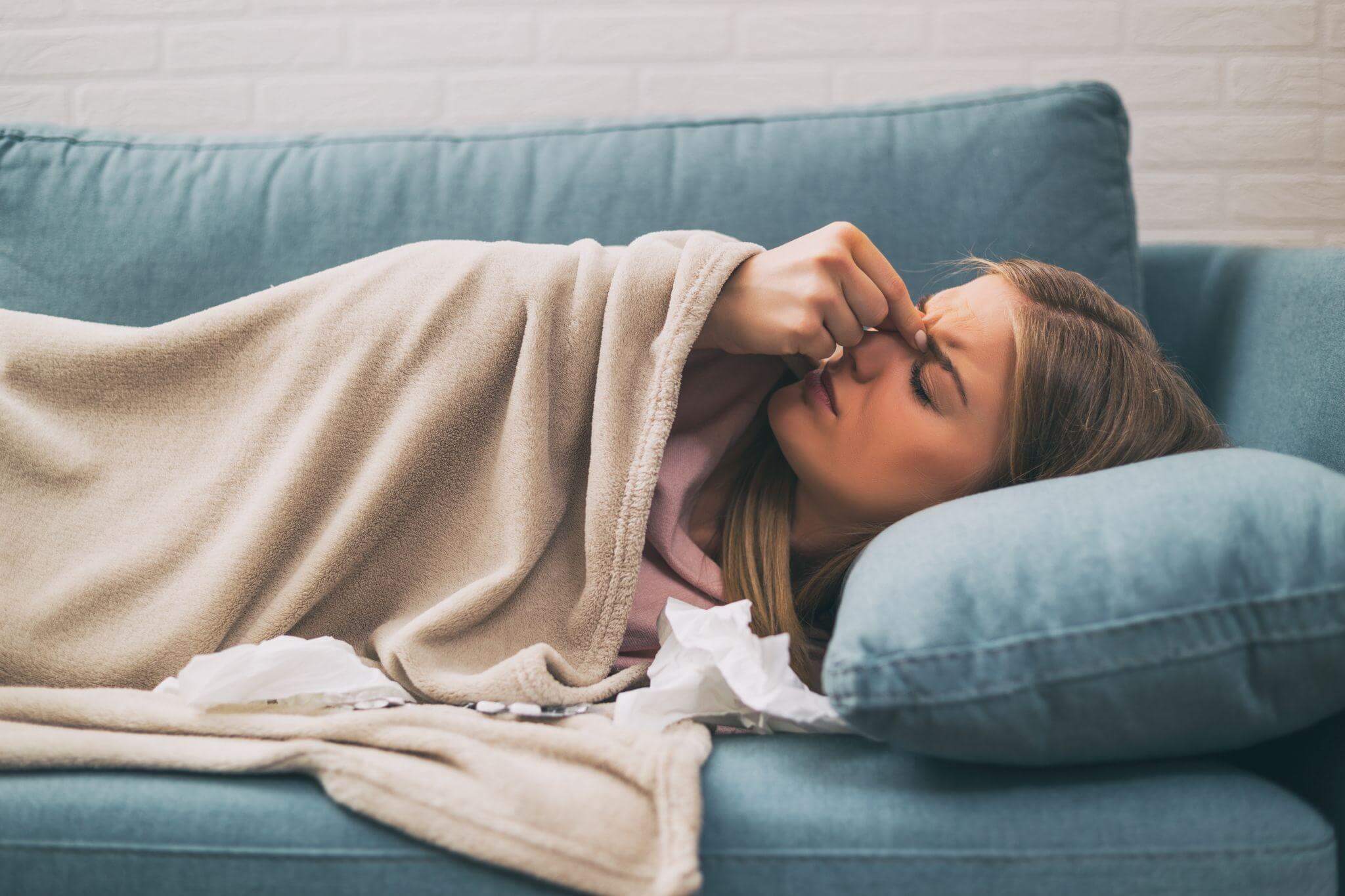Highlights
- Many different medical conditions have headache as a symptom.
- The majority of headaches are classified as primary, meaning they have no clear underlying cause.
- Most headaches can be prevented and managed with medication.
- Understanding medication types and availability can help you find the lowest price for headache medication.
Everyone gets headaches, for a wide variety of reasons. Yet there are many types of headache, and they’re treated differently. There are several ways to classify headaches, but the most common are primary vs. secondary headaches and acute vs. chronic headaches. While primary headaches have no clear underlying cause, secondary headaches are caused by a specific health condition. Both can be treated effectively in most cases — with the right medication.
What Are Headaches?
For the layman, a headache has an obvious definition, but for a doctor, it’s more complicated. Medically speaking, there are many types of headache, ranging from relatively harmless to symptoms of serious disease. In order to better sort out which headaches indicate a potential problem and which don’t, doctors use a few basic classifications.
Primary vs. Secondary Headaches
With primary headaches, the headache is the main symptom of the disorder and there’s no obvious underlying cause. Primary headaches make up the majority of diagnosed headaches. Primary headaches may also have secondary causes or aggravating factors, and addressing them can help with headache prevention.
In one case study, a man experiencing cluster headaches had a wisdom tooth removed, which drastically reduced symptom frequency.
When there is a clear cause for a headache, it is classified as secondary, and treating that cause can resolve the headache. If you have allergies, for example, you’ve likely experienced a sinus headache and treated it with allergy medication.
Secondary headaches can also have a cause elsewhere in the body. For example, an analysis of studies in 2018 found that people with celiac disease were more likely to experience headaches than people without it. Treating the condition will often resolve the headaches.
Chronic vs. Episodic Headaches
An episodic headache is a headache that occurs a few times in a given month. A migraine that happens up to four times a month, for example, would be characterized as episodic, or acute. One that happens more frequently is usually diagnosed as chronic.
New Headaches
An old headache is a secondary or primary headache with a known cause that you’ve had for an extended period of time. If you’re prone to migraines and get a headache, for example, it’s likely related to the migraine. However, if your headache pattern changes, you should seek medical attention because it may be a symptom of another problem.
A new headache usually happens suddenly and doesn’t have an obvious cause. If you experience a headache that’s new to you, especially if you’re over age 50, see a doctor immediately. It could be a sign of a more serious problem.
Other red flags that should prompt a visit with your primary provider include:
- The sudden onset of a painful headache, called a thunderclap headache
- Increase in frequency and/or severity, especially a change from episodic to chronic
- Signs of infection, such as flu-like symptoms
- Possibility of immunocompromise, known or unknown
- Papilledema (swelling of the optical disc)
- A recent head injury
- Inability to move one or more limbs
- Personality changes, changes in mental competence, or difficulty staying conscious
- Exertion triggers, including coughing, exercise, and sex
None of these is necessarily a sign of a more serious issue. For example, a primary sex headache, where the sufferer begins to experience a headache during sex, is a rare but documented headache type. Still, it’s a good idea to get checked out to get proper treatment and rule out a more dangerous illness.
Types of Headache

Migraine Headache
Migraine is a neurological disorder causing recurring headaches that usually occur on one side of the head and feel pulsating, or throbbing. An estimated 15 percent of the global population experience migraine headaches.
Migraine Causes
The causes of migraine are unknown, but they are suspected to have a strong genetic component and can be caused or aggravated by environmental factors.
Migraine Symptoms
Migraine is generally much more than a headache. Beyond the headache itself, people with migraine can experience:
- Nausea
- Vomiting
- Sensitivity to external stimulus like lights or smells
- Visual disturbances such as aura
Migraines can last anywhere from hours to days, and many people experience a migraine “hangover” that can last for a day or two after the headache itself is gone.
Migraine Risk Factors
The complexity of migraine as an illness makes isolating any one risk factor difficult. There does appear to be a genetic component, but genetics don’t appear to be the sole factor, and even twins who both get migraine can get different forms of it.
Another risk factor for migraine is triggers you might not be aware of. While the list of triggers is broad, some common ones include:
- Alcohol
- Caffeine
- Stress
- Intense lights, sounds, or smells
- Changes in sleep patterns
- Intense exercise
- Changes in barometric pressure
- Medications
- Hormone-based medicines
- Aged cheeses
- Salty or heavily processed foods
- Changes in eating schedules
Everyone has different triggers, and sorting out yours might be difficult. Keeping a migraine diary can help isolate them.
Migraine Complications
Migraine with aura may raise your risk of stroke. There’s also a risk that occasional migraines may become more frequent over time, sometimes called chronification in the literature.
Migraine Treatment
Migraines are generally treated with medication. Abortive medication for headaches prevent migraines as they occur, while preventatives limit the severity and frequency of migraines.
Common prescription medication for migraines include:
- Sumatriptan (Imitrex/Sumavel)
- Eletriptan (Relpax)
- Rizatriptan (Maxalt)
- Zolmitriptan (Zomig)
- Frovatriptan (Frova)
- Almotriptan (Axert)
- Naratriptan (Amerge)
- Ergotamine (Ergomar)
- Dihydroergotamine (Migranal/Migergot)
- Lasmiditan (Reyvow)
Tension-type Headache (TTH)
Tension headaches cause a pressing or tightening pain that radiates from the various muscle groups that affect both sides of the head, such as the eyes or upper neck. It’s believed that TTH is the most common form of headache.
Tension Headache Causes
Stress is the most common cause of tension headaches. Using certain muscle groups, like the eyes, for extended periods can also be a trigger. Some neurotransmitters such as serotonin have been implicated in their frequency and severity and can be managed with antidepressants.
Tension Headache Symptoms
TTH is usually diagnosed using the following criteria:
- A duration of anywhere from 30 minutes to seven days
- Pain on both sides of the head
- A pressing or tightening feeling, with no throbbing
- Either mild or moderate intensity
- Unaffected by light physical activity, like walking a short distance or climbing a set of stairs
- Lack of nausea or vomiting
- Presence of light sensitivity or sound sensitivity
Tension Headache Risk Factors
While tension headaches can have a number of causes, the most commonly reported are stress and anxiety. Younger people, people with other health issues, and lack of sleep can also trigger headaches.
Tension Headache Complications
There are few reported complications from tension headaches. Frequent attacks may indicate the need to reduce stress or point to chronic dehydration, highlighting that tension headaches can be a symptom of other problems.
Tension Headache Treatment
Antidepressants can be prescribed to help manage TTH if it happens more than 15 times a month. Tricyclic antidepressants (TCAs) are most commonly used. Amitriptyline is first-line TCA treatment, and mirtazapine and venlafaxine are often prescribed if amitriptyline is ineffective.
For less frequent tension headaches, drinking water and gentle neck and shoulder stretching are usually the first line of treatment.
Cluster Headaches

Cluster headaches are severe, recurring headaches that usually happen around the eyes. They usually last from 15 minutes to three hours, and are called cluster headaches because they can happen one after another over a period of days, weeks, months, or even years. They’re sometimes called alarm clock headaches because they can happen at the same time of day repeatedly.
Cluster Headache Causes
The causes of cluster headaches are unknown, although genetics and exposure to certain triggers may play roles.
There are several triggers for cluster headaches, including:
- Alcohol
- Nitroglycerin
- Histamines
- Daytime sleeping
Cluster Headache Symptoms
Cluster headaches often come with secondary symptoms:
- Nasal congestions
- Watering eyes
- Swelling around the eye where the headache is felt
- Drooping eyelid
- Constricted pupils
- Redness in the conjunctivae
Cluster Headache Risk Factors
Family history appears to be the primary driver for developing cluster headaches. Tobacco use might cause earlier onset and affect the frequency of cluster headaches, but smoking isn’t currently considered a primary cause.
Cluster Headache Complications
There do not currently seem to be any long-term complications from cluster headaches, although their frequency can interfere with daily life.
Cluster Headache Treatment
Medication for cluster headaches includes verapamil, a calcium channel blocker, paired with steroids to limit short-term symptoms.
Headache Diagnosis

Due to the wide range of headache types, they’re generally diagnosed using the differential method, meaning that your doctor will arrive at a diagnosis after ruling out other potential causes.
If you’re concerned about a headache, contact your doctor with the following information:
- Type of pain. Different types of pain point toward different possible causes.
- Any recent diagnoses. Headaches can be tied to a wide range of seemingly unrelated conditions, including glaucoma and high blood pressure.
- Date and time of onset. If you always have a headache at a certain time, such as when you wake up in the morning, or it’s a new headache that began around a certain date or related to a particular event, that knowledge can assist with diagnosis.
Headache Treatment
While different types of headaches can have more specific treatments, there are some general steps you can take to manage headache overall.
- Find possible headache triggers. A detailed headache diary can help you identify triggers and avoid them as possible.
- Drink water regularly. Dehydration contributes to headache severity and intensity, especially if headache is a symptom of another condition.
- Monitor your medication intake. If you’re taking medicine regularly to treat your headaches, including over-the-counter drugs, it may increase the severity or frequency of your headaches. Speak with your doctor about your intake and weaning yourself off the medication.
- Maintain a healthy sleep schedule. Lack of sleep can aggravate headaches and is a potential trigger itself.
- Eat a healthy diet on a regular schedule. Avoid skipping meals, and track meals to avoid trigger foods.
- Get regular aerobic exercise. Exercise is generally recommended, and even brief daily walks can help with overall well-being and mood.
- Manage stress. Stress is one of the most common triggers for all forms of headache; stress management techniques can help keep it in check.
- Track your caffeine intake. Caffeine can both cause and abort headaches. The role it plays in some forms of headache seems to vary by individual and dose. Keep an eye on your caffeine intake to get a sense of whether it’s helpful or a trigger for you.
Find The Lowest Price for Headache Medication
If you’re managing any form of headache, finding the right medication for headaches at the right price shouldn’t be part of the problem. BidRX helps you find the lowest price for your headache medication by putting your prescription up to bid for pharmacies across the country, including specialty pharmacies and local businesses. Just pick your bid and have it shipped to your door, or pick it up locally.
To see how BidRx can help, visit our medications page and find your headache medications to get started.



